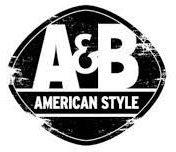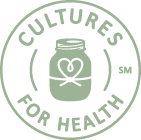
Art | Resources
A & B American Style
 They had me with their headline: “Our mission is to take sugar out of the American diet.” They make all-natural condiments using real, whole ingredients. No sugar. Nothing artificial. At the moment it’s a few pepper sauces. But I hope they do more and go organic.
They had me with their headline: “Our mission is to take sugar out of the American diet.” They make all-natural condiments using real, whole ingredients. No sugar. Nothing artificial. At the moment it’s a few pepper sauces. But I hope they do more and go organic.
Ciberia Soap Supply
Wholesale organic oils and butters that anyone can purchase for soap making.
Phthalates in Fast Food—But That’s Not All…
Researchers at George Washington University have found that people who eat fast food tend to have significantly higher levels of certain phthalates that have known health effects.
The danger isn’t from the food itself, but rather the process by which the food is prepared.
To determine how fast food processing methods affects the presence of certain non-natural chemicals, researchers analyzed data for nearly 9,000 people, that was collected as part of federal nutrition surveys conducted between 2003 and 2010. The surveys included detailed information about the participants’ diets, including what each had eaten in the last 24 hours. They also contained the results of urine samples taken at the same time, which allowed the researchers to measure the levels of three separate chemicals, including the phthalates DEHP and DiNP.
| DEHP | DiNP | ||
| fast food in 24 hours before the test | “much higher” | “Much higher” | than those who had eaten none |
| a sizable amount of fast food | 24% higher | 39% higher | than those who had eaten none |
| a little fast food | 15% higher | 25% higher | than those who had eaten none |
Exposure to phthalates is widespread. The group of chemicals is used in many products, such as food packaging, where it does not appear on the label. Even though the dangers of phthalates are not yet generally accepted, studies show a strong link between DEHP and diabetes, an increase in allergies in children and negative child behavior. The phthalate DiNP has been association with higher blood pressure.The amount of phthalates in fast food seems to be associated with the amount of processing equipment food goes through in quick-serve restaurants. More contact with plastics, conveyor belts, and various machines results in more phthalates in the food.
But fast foods are not the only source of phthalate exposure. Phthalates from food processing are widespread in the food industry. An article in The Guardian reports:
In food, for example, even milk packaged in glass may have passed through plastic tubes on its way from the cow to the bottle, taking DEHP along with it. “Milking machines use a lot of plastic and DEHP is free and very lipophilic (fat soluble), and milk is full of lipids, so it just pulls the DEHP out of the plastic tubing and into the milk,” explains Robin Whyatt, professor of environmental health sciences at the Columbia University Medical Center and the lead author on several landmark phthalate studies. “So my guess would be that milk is a pretty important source of dietary exposure to DEHP.”
In the same article, a study showed imported organic spices to be contaminated with phthalates:
Spices are another surprising source of phthalate exposure. A 2013 study, published in the journal Nature, compared the phthalate levels of two groups, one eating their regular diet but armed with a handout of recommendations for ways to reduce BPA and phthalate exposure in their diet, and the other eating a catered diet consisting solely of local, organic fare, none of which had touched plastic packaging. The study authors were shocked to find that DEHP levels in the local, organic group jumped 2,377% over the course of the experiment. Determined to figure out why, the researchers tested all of the foods consumed by the group and found high levels of the phthalate in dairy products and various organic, imported spices.
This just points out once again the importance of preparing your food at home from fresh ingredients that have not been through industrial processing. Even organic foods packaged in glass have still been run through machines with soft plastic tubing.
See my food blog Toxic Free Kitchen for recipes and more information on preparing food yourself at home.
THE WASHINGTON POST: Researchers have found a ‘striking’ new side effect from eating fast food
NHANES is the [National Health and Nutrition Examination Survey
THE GUARDIAN: Phthalates are everywhere, and the health risks are worrying. How bad are they really?
HealthLabs.com
 Offers lab tests without requiring a doctor’s prescription. You order the tests online or by phone, then take your receipt to one of 2000+ local labs, where your blood is drawn. Get results within 3 business days. Tests include Allergy Testing, Anemia, Anti-Aging / Hormones, Arthritis, Blood Typing, Cancer, Cardiac / Cholesterol, Celiac Disease, Diabetes, Drugs, Fertility, Gastrointestinal, General Health / Wellness, Heavy Metals / Toxins, Hepatitis, Immunity Detection, Kidney (Renal) Function, Liver Function, Military Testing, Pregnancy / Prenatal, Prostate, Sports Testing, STD Testing, Thyroid, andVitamin & Nutritional Testing.
Offers lab tests without requiring a doctor’s prescription. You order the tests online or by phone, then take your receipt to one of 2000+ local labs, where your blood is drawn. Get results within 3 business days. Tests include Allergy Testing, Anemia, Anti-Aging / Hormones, Arthritis, Blood Typing, Cancer, Cardiac / Cholesterol, Celiac Disease, Diabetes, Drugs, Fertility, Gastrointestinal, General Health / Wellness, Heavy Metals / Toxins, Hepatitis, Immunity Detection, Kidney (Renal) Function, Liver Function, Military Testing, Pregnancy / Prenatal, Prostate, Sports Testing, STD Testing, Thyroid, andVitamin & Nutritional Testing.
Are Organic Strawberries Really Organic?
Question from Jackie
www.realfarmacy.com/dirty-little-secret-organic-strawberries-arent-really-organic
I saw the above on Facebook and they showed a picture of Driscoll’s Strawberries with it.
So I wrote to them regarding the above and below is there answer.
You cut through this much better than I do.
What do you think, should we not be buying them???
Thanks
Dear Jackie,
Thank you for taking the time to ask about our growing practices at Driscoll’s. Growing conditions vary from farm to farm and among different growing regions around the world. Depending on these conditions, berry farmers may need to take action to protect their crop by using protective materials. Any pesticide that is used must be in compliance with federal and state laws, and must comply with the pesticide registration policies of the U.S. Environmental Protection Agency (US EPA), and the berries must also be in compliance with legal pesticide tolerances established by the U.S. Food and Drug Administration (US FDA). For additional information on specific pesticides available for use by berry farmers, please refer to the US EPA’s website at www.epa.gov/pesticides/factsheets/index.htm
The type of farming method used to grow the berries (organic or non-organic) will also determine what options the farmer has to protect the crop. An organic farmer can only use pesticides that have been approved for certified organic farming by the United State Department of Agriculture’s (USDA) National Organic Standards Program. A non-organic farmer can choose to use either an approved organic or a non-organic pesticide. Driscoll’s is also one of the largest suppliers of organic berries with a product line that includes strawberries, raspberries, blueberries and blackberries. We are proud to offer consumers a wide assortment of organic and non-organic berries that allows consumers to have a choice when purchasing Driscoll’s berries.
Hopefully this information has offered some insight into our growing practices. Please let me know if you have any additional questions that haven’t been answered.
Best Regards,
Hannah Hughes
Driscoll’s Customer Care Representative
Debra’s Answer
Oh this is a difficult question.
If you didn’t click through and read the article, it was making the point that the SEEDLING is treated with methyl bromide, even for organic strawberries.
First of all methyl bromide degrades in the sun in 10 days. So it’s highly likely that as the plant grows there is no residue of methyl bromide by the time the fruit is formed and you eat it.
Here’s more about fumigation from NPR
California’s strawberry growers don’t want to take any risk that their crop will fail…
So every year, a month before planting time, fumigation machines move slowly across California’s strawberry fields. They inject chemicals into the soil and seal the fumes into the soil with sheets of plastic.
The chemicals kill practically everything in the soil: Insects, weeds, and fungi..
Organic strawberry growers don’t fumigate. They stay a step ahead of diseases by moving from field to field. This also means that they only get to grow strawberries on a particular field once every three to five years, or sometimes even longer. Yet even California’s organic strawberry growers buy their plants from nurseries that do use fumigation. Nobody wants to run the risk of bringing diseased plants into their fields.
This technology has done wonders for strawberry production. But it’s under attack. And it may have to change.
The most powerful fumigant — methyl bromide — is supposed to be phased out gradually because it can eat away at Earth’s ozone layer. It’s still used under a “critical use exemption” that the Environmental Protection Agency has obtained each year.
But I’m not sure it’s a big deal for the end eater of the organic strawberry.
And I just don’t like being sensational about something so small.
We don’t live in a perfect world and we need to make our choices from what is available while at the same time striving to improve the overall problems.
I would say that an organic strawberry from a methyl bromide treated seedling is far better than a conventional strawberry that would have even more toxic pesticides.
So either choose organic, however flawed, or don’t eat strawberries, or grow your own.
I think Driscoll’s response is sufficiently vague as to say nothing. But since they are selling fruit from multiple farms under their brand, they can’t possibly describe the growing conditions for any specific box of strawberries.
That’s why farmer’s markets and gardening are so wonderful!
I just called my local organic nursery and she said organic seedlings sold in nurseries are NEVER treated with methyl bromide or anything else. She said it’s different for commercial seedlings.
My friend Joyce just planted strawberries in cement blocks. The strawberries then hang on the outside of the block instead of in the dirt. I liked this so much I had her come over and help me set up some cement blocks too in my garden, Now I need to go down to the organic nursery and buy some untreated strawberry seedlings.
Have some fun! Grow your own strawberries.

Equipment for Making Kombucha Tea
Question from Linda H
Hi Debra,
I am making kombucha tea for its probiotic and healing properties. It appears that a continuous brewing method promotes a more prolific probiotic colony. Can anyone help me find a “Sun Tea-like” decanter with the following criteria (or suggest the best alternative)?
1. glass container
2. STAINLESS STEEL spigot
3. SILICONE (rather than metal or plastic) seal 4. 1 gallon to 3 gallon capacity
4. NO METAL coming in contact with any beverage (as it could damage/kill scoby)
So far, this is the closest I have come, based on information obtained through live chat at Wayfair.com. They told me it is a stainless steel spigot and glass decanter. I haven’t been able to get through to Wayfair to determine if there is any plastic, but there probably is:
www.wayfair.com/Qualia-Glass-Celebration-3-Gal.-Beverage-Dispenser
The shape of the decanter is not ideal. Cylindrical would be better, with a large mouth. But this could work, if what I was told is true.
I would appreciate any guidance you have to offer. Thank you!
Debra’s Answer
This page has a whole list of kombucha equipment, including large wide mouth glass jars with and without dispensers and a stainless steel replacement spigot. Plus a kombucha starter kit.
I think you’ll find what you need here.
Cultures for Health
 The best way for me to describe this website is “organic do-it-yourself heaven!” They sell all kinds of DIY for making foods like fermented foods, cheesemaking, brewing, sprouting, and more. Their message is You Can Do This yourself at home, and they provide everything from supplies to instructions to cheering you on. I love this site and can’t wait to use it to make these foods myself.
The best way for me to describe this website is “organic do-it-yourself heaven!” They sell all kinds of DIY for making foods like fermented foods, cheesemaking, brewing, sprouting, and more. Their message is You Can Do This yourself at home, and they provide everything from supplies to instructions to cheering you on. I love this site and can’t wait to use it to make these foods myself.
Coconut Secret
 Delicious condiments made from the sap of the coconut tree, using raw methods aging or evaporating at low temperatures. Their Coconut Aminos is one of my favorite condiments—slightly sweet with very low carbs. They also make Coconut Vinegar, Coconut Nectar (sweetener) and coconut crystals (sweetener). Read their website for lots of information about coconut nutrition and harvesting.
Delicious condiments made from the sap of the coconut tree, using raw methods aging or evaporating at low temperatures. Their Coconut Aminos is one of my favorite condiments—slightly sweet with very low carbs. They also make Coconut Vinegar, Coconut Nectar (sweetener) and coconut crystals (sweetener). Read their website for lots of information about coconut nutrition and harvesting.
PACT
 This is what I like. You go to their website and the first thing you see is “Super Soft ORGANIC cotton. No toxic dyes. No toxic pesticides. No sweatshops. No child labor.” That pretty much says it. Casual clothing, underwear, socks and leggings, tank tops, hoodies. Women, men, baby. GOTS certified.
This is what I like. You go to their website and the first thing you see is “Super Soft ORGANIC cotton. No toxic dyes. No toxic pesticides. No sweatshops. No child labor.” That pretty much says it. Casual clothing, underwear, socks and leggings, tank tops, hoodies. Women, men, baby. GOTS certified.
Little Seed Farm
Organic skin care from a solar-powered family farm that raises goats. Liquid and bar soaps are made from the raw milk of their own goats with certified organic olive and coconut oils. Additions are real ingredients, such as vanilla extract derived from fermented vanilla beans, and poppy seeds for “scrub.”






